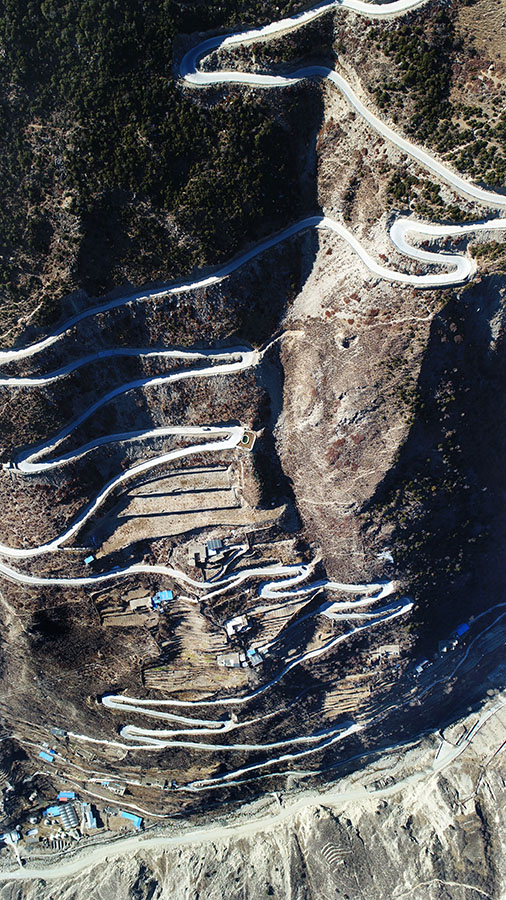Villagers living the high life on the road to prosperity


Cheaper crops
The standard of living also rose because it became cheaper to grow and sell crops, which meant the villagers could spend the money they saved on themselves.
"Cultivation costs were very high before the road was built," said Mao Yongfeng, Party chief of Xiaojin.
"We estimate that the improvements helped people to save about 3,200 yuan each per year, meaning they had more disposable income."
The road also enabled many villagers to herd yaks, which brought in an extra 1,500 yuan per person a month.
Before, the steep mountain path was dangerous, so herders were unwilling to risk sending their animals to the highest elevations where the best grazing land was to be found.
Instead, they grazed their herds on inferior grass at lower altitudes.
Once the road was completed, the herders were able to send their yaks higher, resulting in leaner, tastier meat and better profits.
The autonomous prefecture, in the western part of Sichuan province, is traditionally one of China's poorest regions.
At the end of last year, 15,200 people of its population of 920,000 were living in 123 villages that were classified as "impoverished".
- Couples celebrate traditional Chinese group wedding in Shandong
- China takes to road on first day of national holiday
- China deploys patrols on water, in air around Huangyan Island
- Macao SAR celebrates National Day with flag-raising, reception
- China to expand its participatory law-making process
- World's largest-capacity centrifuge goes into operation in Hangzhou




































